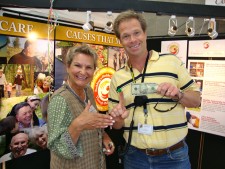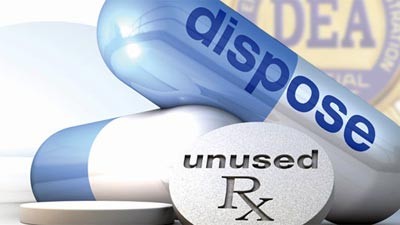Prescription Drug Addiction: Rise Endangers Celebrities, Teens, and Us
I’m insatiably curious about how to stay healthy & where to go next.
Heath Ledger, in his last role as The Joker, filmed as he struggled with multi-drug addiction.
Would it surprise you to learn that prescription drug overdoses now kill more people than car accidents? Somehow that message doesn’t seem to be getting out, says the CDC, which now calls prescription drug abuse an epidemic.
Over the past 20 years, the death rate from drug overdoses has tripled, CDC data show, with prescription painkillers the reason for much of that rise. In 2008 there were 36,000 overdose deaths, almost all of which were from prescription painkillers.
The growth rate is pretty shocking; in 2010 (the last year the CDC has data for), 2 million people reported that they had begun to use prescription drugs for non-medical purposes within the past year. That, says the CDC, comes out to 5,500 a day. The number of people seeking treatment for prescription painkillers rose 400 percent between 2004 and 2008.
Because they can so handily be “borrowed” from friends and family, and because — being technically legal – they seem innocent, prescription drugs are becoming frighteningly popular with teens, experts say. According to the FDA, one in seven teenagers admits to abusing prescription drugs to get high in the past year, and prescription painkillers are now teenagers’ top choice after alcohol and pot. The problem is, teenagers are unlikely to understand how highly addictive these drugs are. After all, if mom takes them for her knee injury, they can’t be that big a deal, right?
The “Heath Ledger Effect” – Death from Multi-Drug Abuse
“Abuse of prescription medications” was the final conclusion of the New York Medical Examiner based on Heath Ledger’s autopsy and toxicological analysis. What was found in his system? An entire drugstore of downers: oxycodone, hydrocodone, diazepam, temazepam, alprazolam and doxylamine. While swallowing half the contents of the medicine cabinet may be rare, the overall phenomena — mixing several central nervous system depressants — is becoming more and more common.
What’s particularly scary is that while some folks are certainly doing it on purpose, many others are endangering themselves unknowingly. The list of prescription medicines that depress the central nervous system is long. By far the worst offenders are the opioid painkillers oxycodone and hydrocodone (Oxycontin and Vicodin). But there are many others that are commonly prescribed including sleep aids, both prescription and OTC, anti-anxiety drugs, even antihistamines. (Diphenhydramine, commonly known as Benadryl, for example).
This photograph of Macaulay Culkin, shot in NYC in February 2012, has been widely used to suggest the former child actor is in bad shape.
Each of these drugs slows heart rate and breathing; combine them unwittingly and you can stop breathing altogether. Add alcohol – also a central nervous system depressant — to one or more of these drugs, and you can slide into a coma while you sleep.
Sadly, Heath’s celebrity entourage is growing. Stories of addiction to Oxycontin, Vicodin, and other prescription painkillers, or of mixing those drugs with anti-anxiety drugs, sleep aids, and other nervous system depressants are dogging numerous celebrities right now.
Who’s Telling the Truth? Macaulay Culkin or the National Enquirer?
When the National Enquirer published a story claiming that Macaulay Culkin is addicted to heroin and several prescription painkillers including Oxycontin, Vicodin and Percocet, the actor’s press rep denied the story as “categorically without merit” and “impossibly and ridiculously fictitious.” The report was based entirely on anonymous sources “close to Culkin” who claimed Culkin has already suffered dangerous overdoses and who expressed fear for his life if he doesn’t enter rehab soon.











